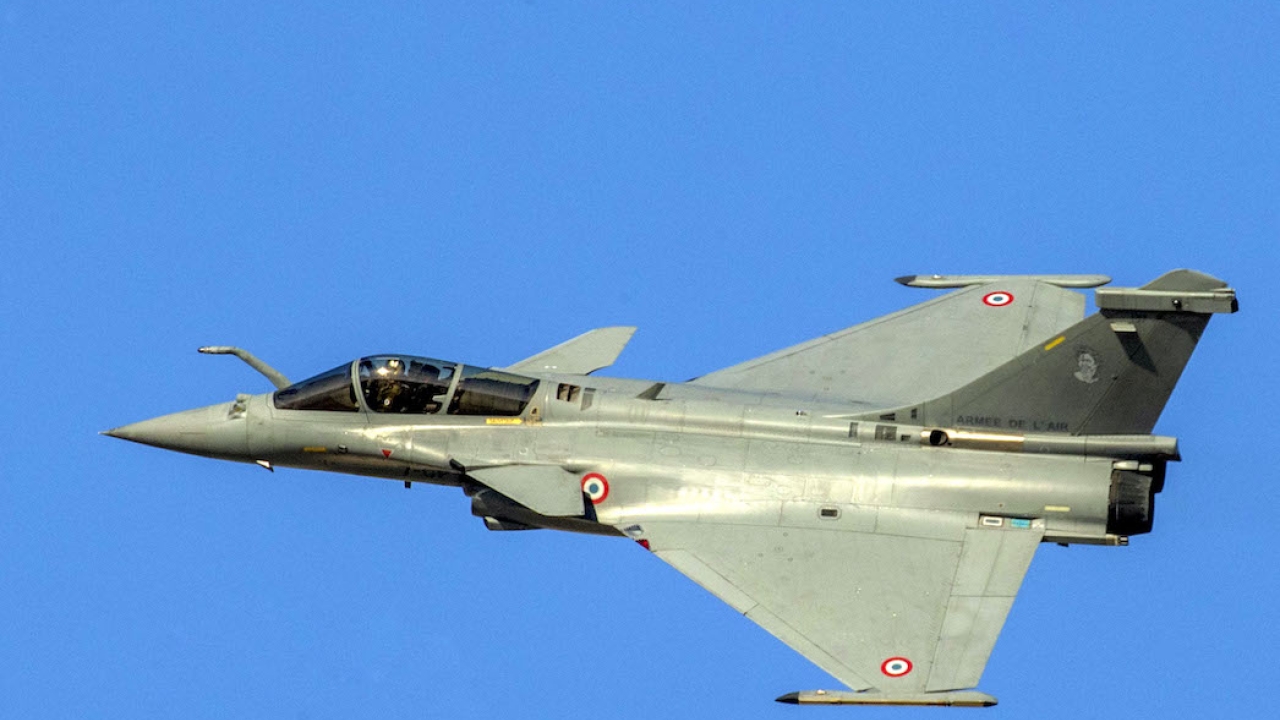Rafale just the ticket - but F-35 set to lose out
As the UAE welcomes the Dassault Rafale, it appears to have shut the door on the Lockheed Martin F-35A.

Cruising: An Armée de l’Air Rafale gave a polished display at the Dubai Airshow. A couple of weeks later, the UAE announced its order for 80 of the type. Picture: Billypix.
The UAE’s recent order for 80 Rafales was a very long time coming and, when it did arrive, it was something of a surprise to most observers, who had been watching an Emirati order for the F-35 order emerge and firm up.
Following the Rafale order, announced on December 3 2021, the planned F-35A procurement initially remained on track.
However, less than a fortnight later, on December 14, the UAE informed the US Government that it would suspend F-35 discussions as a result of a reassessment of what were described by a UAE official as “Technical requirements, sovereign operational restrictions and a cost/benefit analysis”.
It was stressed that the USA remained the UAE’s preferred provider for advanced defence requirements and it was said that “discussions for the F-35 may be reopened in the future”. Some analysts suspect that the suspension of negotiations is simply a tactic by the UAE, which is believed to be irked by some of the conditions that the US is trying to impose on the F-35 deal.
It is important to remember that the UAE’s planned F-35 procurement was always supposed to be separate from, and additional to, the wider Emirati fighter requirement, and was intended to provide a new capability for the UAE Air Force and Air Defence (UAEAF&AD).
That wider fighter requirement was, itself, divided into two, with a near-term requirement for an aircraft to replace the UAE’s surviving fleet of around 53 Dassault Mirage 2000-9s (of 68 Mirages originally delivered) and a longer-term requirement for a replacement for the survivors of 80 F-16E/F Desert Falcons.
The Rafales are being procured to replace the Mirages, and their acquisition did not affect the UAE’s need or desire for the F-35. In fact, many believe that the UAE still wants and needs the F-35, and still has a requirement for a further fighter to replace the F-16s.
The day after the Rafale order was publicly announced, Major General Ibrahim Nasser Al Alawi, commander of the UAEAF&AD, explained: “This deal is not considered as an alternative for the forthcoming F-35 deal, it is rather a complementary deal... as we develop our air force capabilities.”
Dassault originally began marketing the Rafale to the UAE in the mid-1990s, and the aircraft was originally shortlisted (with the F-16) in September 1996. Efforts to sell the Rafale to the UAE continued even after the selection of the F-16 in 1998, resuming in earnest in 2008.
In mid-December 2010, Sheikh Mohammed bin Zayed Al Nahyan, Crown Prince of Abu Dhabi and commander of the UAE armed forces, asked France to renew its Rafale offer during a visit to Paris.
By 2011, an order for about 60 Dassault Rafales seemed to be on the verge of being placed, and many industry insiders were predicting that contracts could be signed during that year’s Dubai Airshow. There was, therefore, some shock when Dassault’s new offer was very publicly rebuffed by the UAE.
At the time, the crown prince praised French President Nicolas Sarkozy, saying that his “personal intervention in this process has sustained Dassault at the forefront of our considerations”, and acknowledging that France “could not have done more diplomatically or politically to secure the Rafale deal”. But he went on to blast Dassault, which, he said, seemed “unaware that all the diplomatic and political will in the world cannot overcome uncompetitive and unworkable commercial terms”.
Behind the scenes, it is understood that the Emiratis wanted an aircraft that was significantly more advanced than the then-current Rafale versions in service with the Armée de l’Air – or than any planned upgraded standard. The UAE reportedly expected the French side to pay the cost of developing the upgrades that would be required (variously estimated at between $2.29 and $5.72 billion).
But, while that deal collapsed, France knew the value of persistence, and has mounted a decade-long charm offensive, which has included Armée de l’Air Rafales being stationed in the UAE, as well as regular exercises.
Finally, this persistence paid off and, in December, during a visit to the UAE by President Emmanuel Macron, the historic contract for 80 Rafales was signed.
Tareq Abdul Raheem Al Hosani, CEO of Tawazun Economic Council, in charge of security and defence acquisitions for the UAE, and Eric Trappier, chairman and CEO of Dassault Aviation, did the honours in the presence of Sheikh Mohammed bin Zayed Al Nayan, Crown Prince of Abu Dhabi and deputy-commander of the UAE Armed Forces, and Macron himself.
Under the newly signed contract, which the French Armed Forces Ministry said was worth €16 billion ($18 billion), deliveries will begin in 2027. The UAE will be the first export operator of the new F4 standard, which will enter French service in 2025.
On the same day that the Rafale deal was announced, the US State Department issued a statement confirming that the Biden administration “remains committed to the proposed sales of F-35 aircraft and munitions even as we continue consultations to ensure that we have a clear, mutual understanding of Emirati obligations and actions before, during, and after delivery”.
The Emirati F-35 deal has never been simple, and has never been something that would go through ‘on the nod’. The sale was impossible until the UAE signed the Abraham Accords in August 2020, becoming the third Arab country to establish full diplomatic relations with Israel, and even then, was viewed as a possible threat to Israel’s “qualitative military edge” in the Middle East, which the US is legally required to maintain!
The US Defense Security Cooperation Agency’s original notification to Congress acknowledged that “the proposed sale of this equipment and support represents a significant increase in capability and will alter the regional military balance”, and the possibility of triggering a regional arms race made the proposal extremely sensitive!
The UAE has bought Russian Pantsir-S1 air defence systems and Chinese Wing Loong II armed drones, while China’s Huawei Technologies is embedded in its telecoms network and there is a real fear that the Emirates’ relations with China and Russia could compromise US technology.
It is worth recalling that Turkey, a major US ally and a full NATO member, was suspended from the F-35 programme in 2019 after it took delivery of advanced Russian S-400 air defence missile systems.
Democratic senators behind the new ‘Secure F-35 Exports Act of 2021’, expressed reservations about maintaining the security of F-35 technology in the light of the UAE’s growing ties with Moscow and Beijing.
The UAE’s ambassador to the US, Yousef al-Otaiba, pointed out that such fears are groundless: “The UAE has a long and consistent track record of protecting US military technology, both in coalitions, where we’ve served alongside the US military, and inside the UAE, where a broad range of sensitive US military assets have been deployed for many years.”
Many within the US administration are eager to overcome the obstacles and get the deal done, since they would like the UAE (an important ally and regional security partner) to be able to operate the F-35 to deter and combat mutual shared threats, including Iran.
Stay up to date
Subscribe to the free Times Aerospace newsletter and receive the latest content every week. We'll never share your email address.


